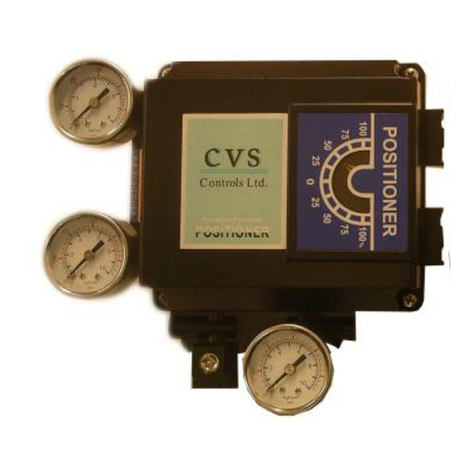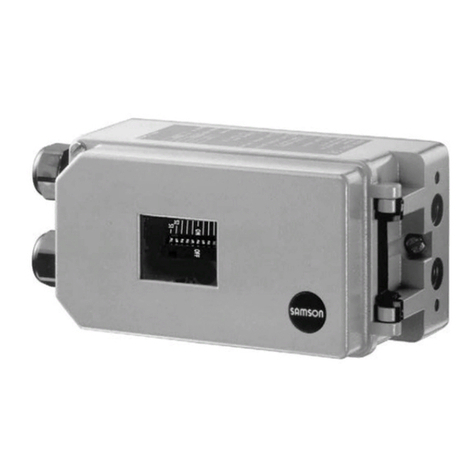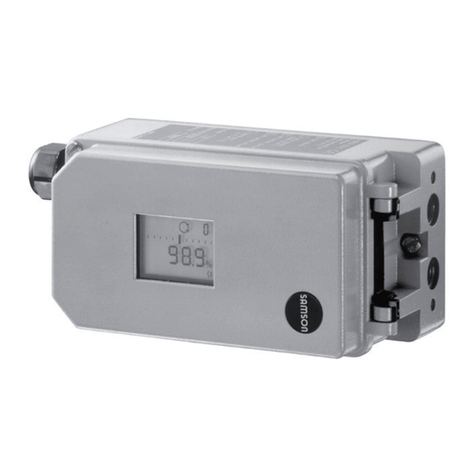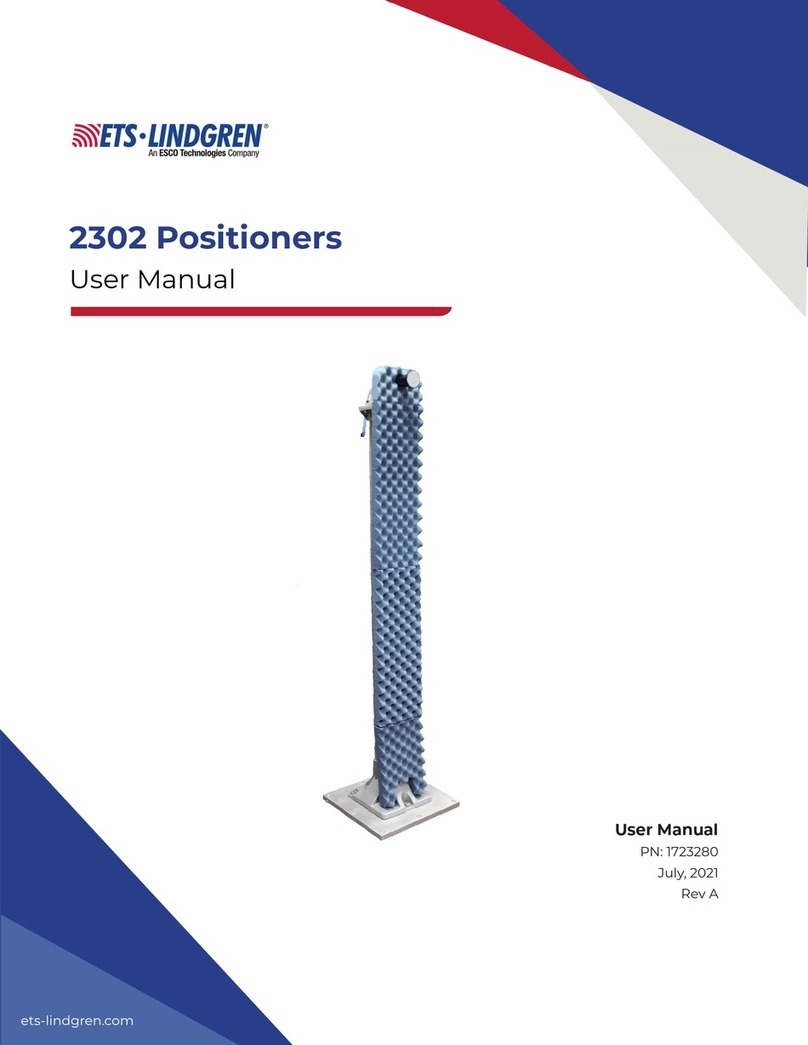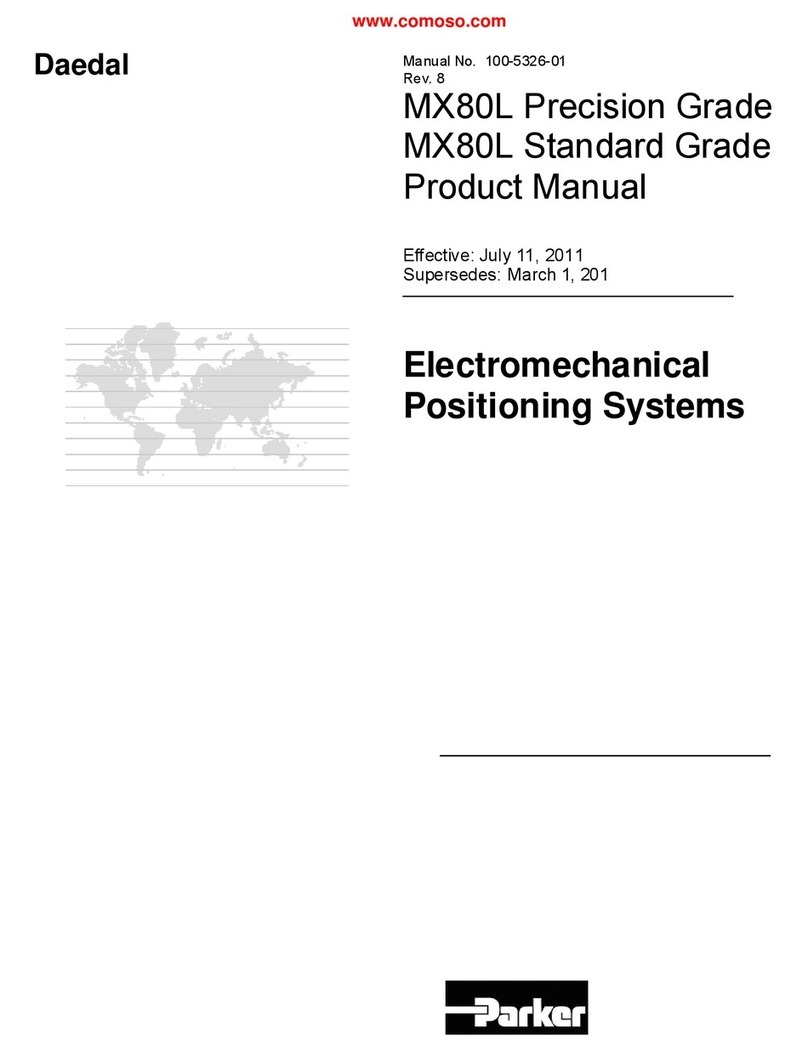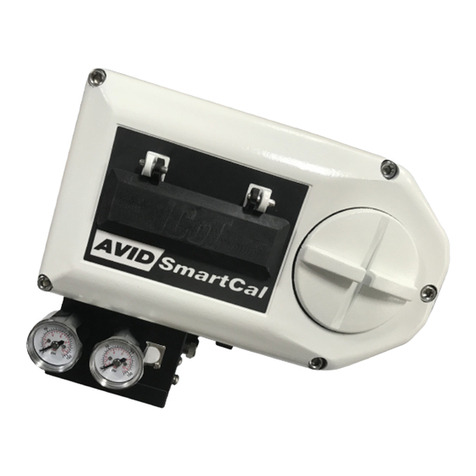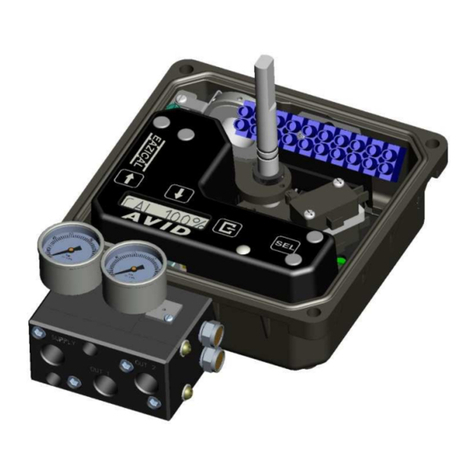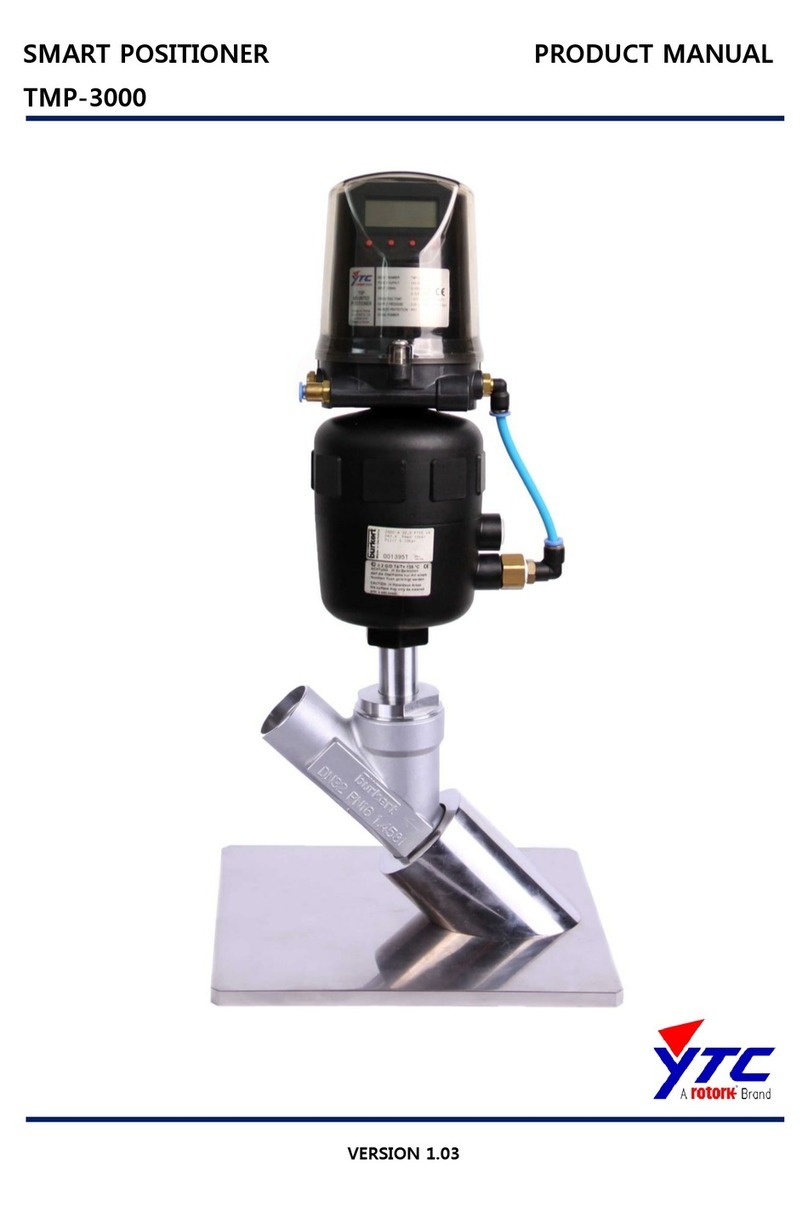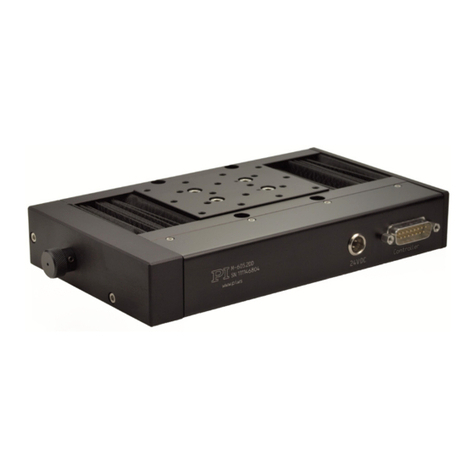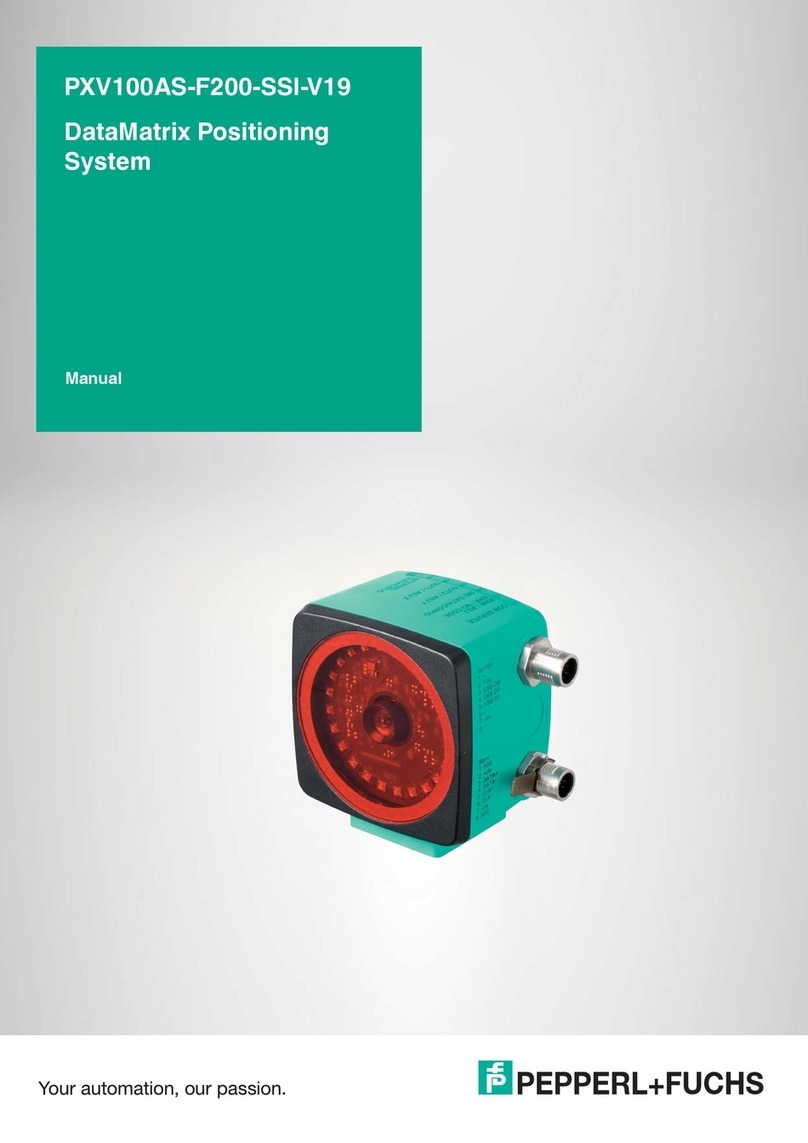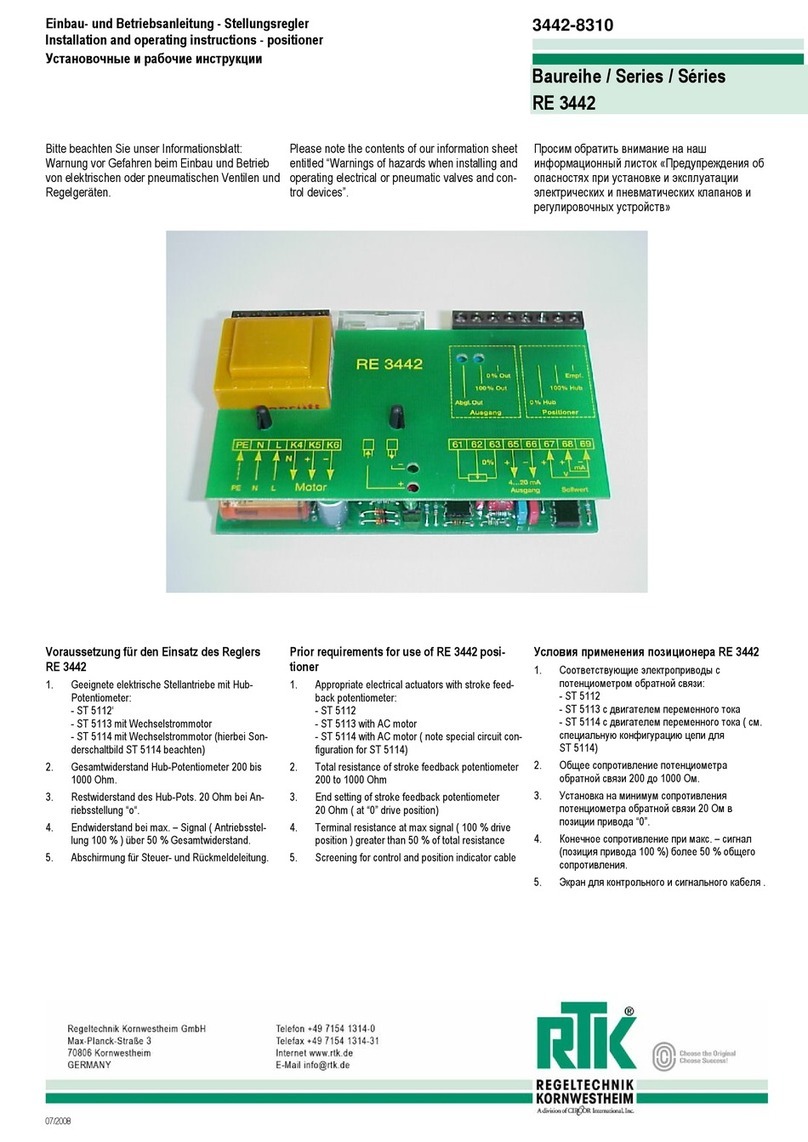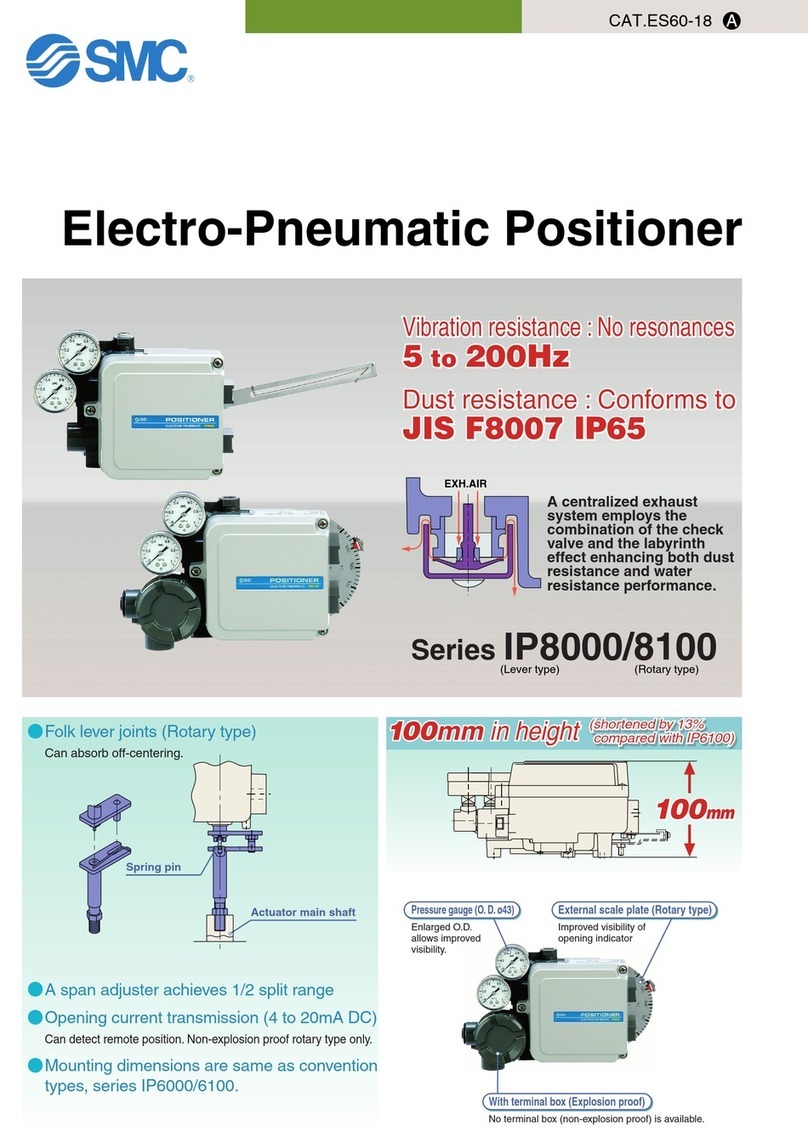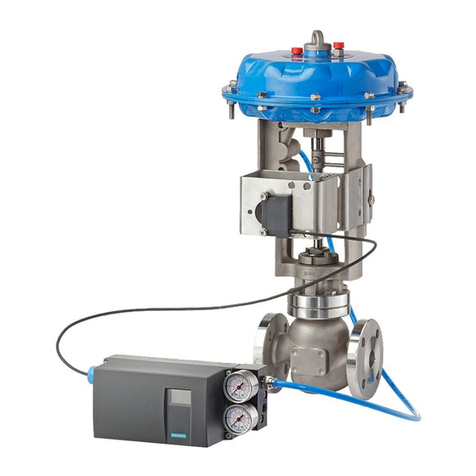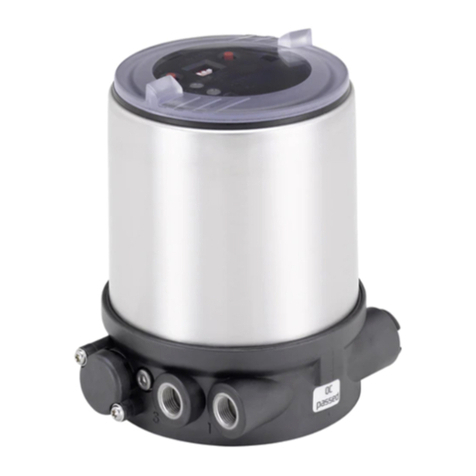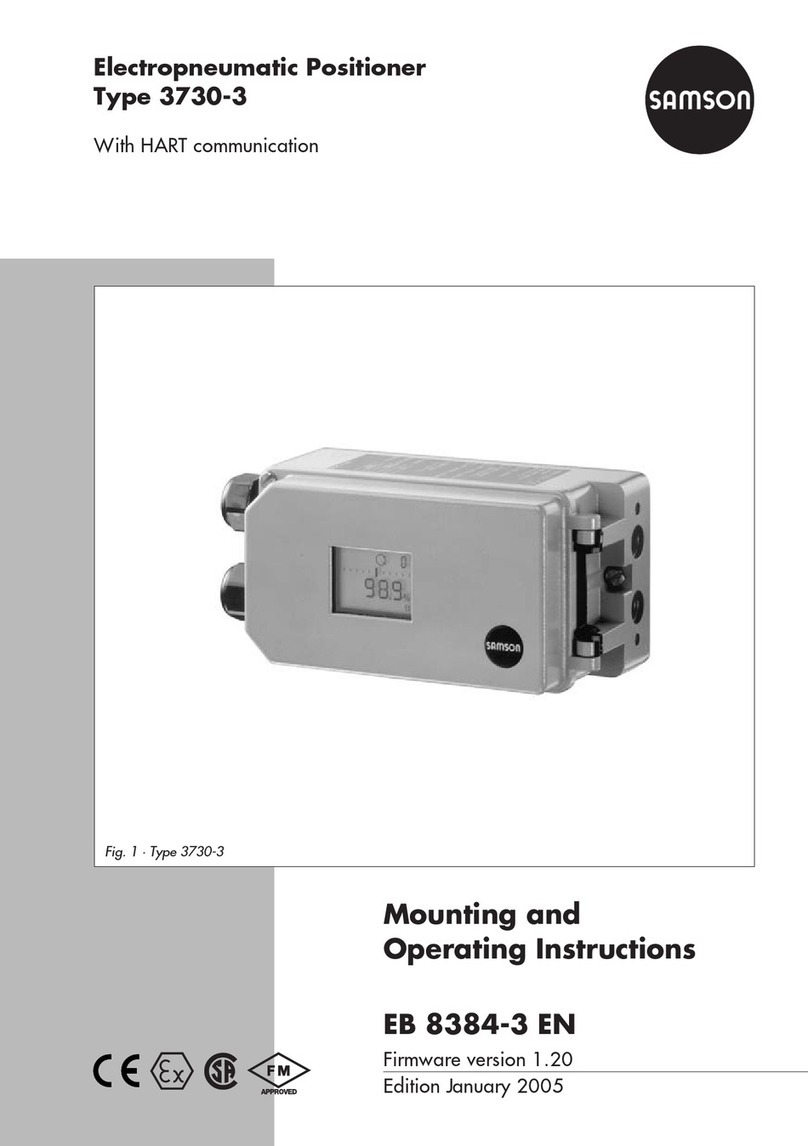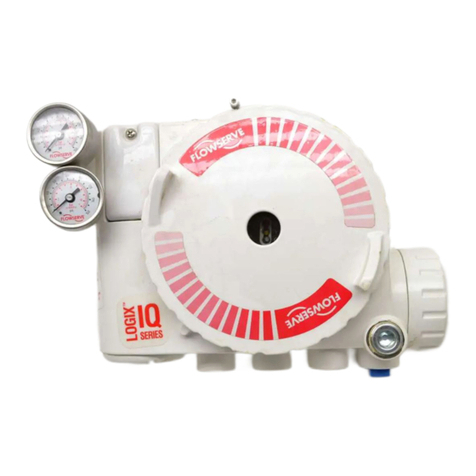
Non-contact position feedback
To provide consistently accurate performance information, all linkages, levers and connecting rods,
from the positioner to the control valve have been eliminated from the design. Valve position sensing
is performed totally by non-contacting means based upon characterisation of flux strength as a
function of position.
Remote position control
Since valve position feedback to the SmartCal positioner is accomplished by non-contacting means,
the SmartCal has the unique ability to be mounted remotely (up to a distance of 15 m or 50 feet)
from the device it is controlling. In the event the control valve is located in either a high vibration
or extremely corrosive environment, the non-contact position feedback feature allows for isolated
placement of the positioner.
Local LCD
The SmartCal positioner is supplied with HART® interface and a 3-button keypad interface. All
SmartCal positioners are furnished with a multi-line LCD, and allow for automated calibration of
the positioner. The local LCD provides a multitude of onsite diagnostic information. The displayed
information will show the setpoint and position as a percentage. The range of values displayed are
from 0.0% to 100.0%. Displayed resolution is in 0.1% increments, however, internal calculations
are maintained at higher precision.
On-board sensors
The SmartCal positioner has the capability to monitor its operation. If an error or failure condition
occurs, it will be displayed on the local LCD, through the HART® interface and displayed on a hand
held terminal or at a PC maintenance station. Note: Error codes are denoted on a label affixed to
the LCD flip-up protective cover.
Local keypad
All positioners are provided with a 3-button keypad. The keypad is provided for zero and span
adjustments, as well as valve characterization and gain adjustments.
Intelligent calibration (HART® protocol)
The SmartCal positioner responds to HART® commands for seeking the ‘valve closed’ position
and assigns an instrument signal of 4 mA to this position. The counterpart of the operation for a
full open state is implemented next by setting the span value. Action reversal is also configured.
Additionally, provisions are made for altering internal servo loop tuning via the HART® link. In
this manner, positioner performance may be optimized with a wide combination of valves and
actuators.
Negligible bleed
Designed to consume the least possible amount of control air at steady state, the SmartCal
positioner can greatly reduce the air consumption of your process and reduce the demand on
instrument air compressors. To increase reliability, the SmartCal employs a patented lapped spool
and floating sleeve design. This balanced construction relies on an air bearing which eliminates
any metal to metal contact.
page 3
AVID SmartCal valve positioner
Installation & operating instructions
